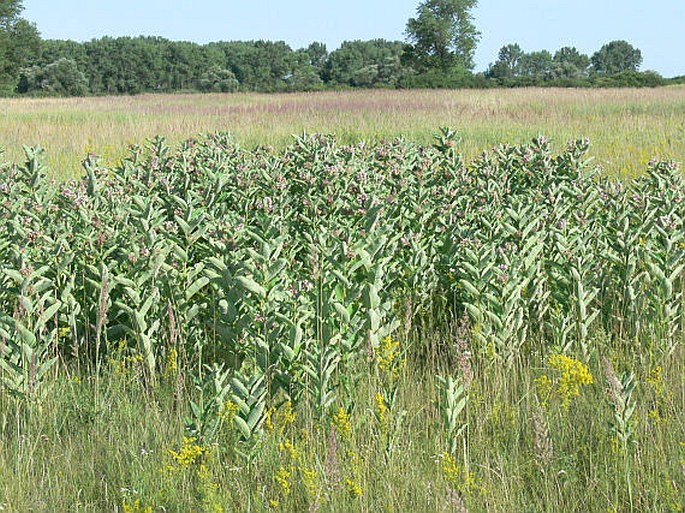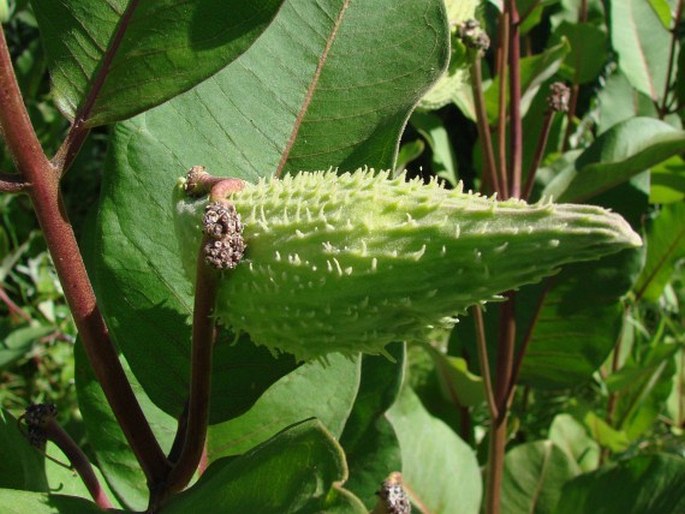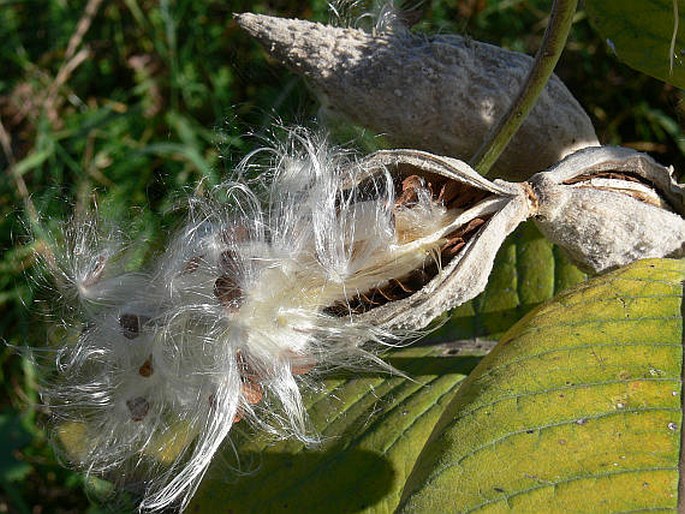Syn.: Asclepias tomentosum Opiz, Asclepias cornuti Decne
Family: Apocynaceae Juss.

Distribution: Native in Eastern part of USA, as an adventive plant in Europe.
Ecology: Fields, waste grounds, roadsides, meadows. Flowers from June to September.

Description: Perennial plants with a single, erect, herbaceous and tomentouse stems, 100–200 cm tall. The leaves are opposite, short petiolate. Petioles approximately 1 cm long, leave blades to 20 cm long, tomentose and light green below, dark green above, ovate-lanceolate or eliptic. Veins of the leaf are marked. Stems and leaves exude a milky sap if cut. The flowers have 5 petals, glabrous internally and pubescent externally, 5 green sepals, shorter than petals. Seed pods are 6–12 cm long, warty. Split open in autum. Seeds are brown and have hairs. Plants reproduce by seeds and horizontal underground roots.
Note: Underground roots, stems and leaves contain poisonous glycosides asclepiadin and vincetoxin.


Photos: 26. 6. 2007 (Slovakia, Blatná Polianka).


